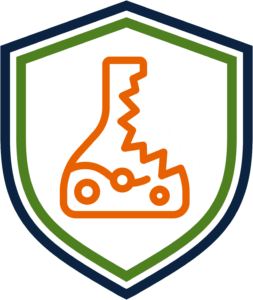Environmental Health & Safety, along with local Emergency Response Agencies (i.e., AU Department of Campus Safety & Security (AUDCSS), Auburn Fire Department, and Opelika Haz Mat Response Unit), are the primary entities that respond to releases and accidents involving hazardous materials.
All laboratories should develop and practice their emergency plans; these should be readily accessible and include all emergency contact numbers and evacuation procedures.
Contact EHS directly for updates on this information. For general information on managing emergencies at the University, go to the Department of Campus Safety & Security’s web page.
Materials generated as a result of spill cleanup are considered hazardous waste if the original material, when disposed of, would have been a dangerous waste. These materials must be managed as described in Chapter 3 in the Chemical Waste Management Guide.


